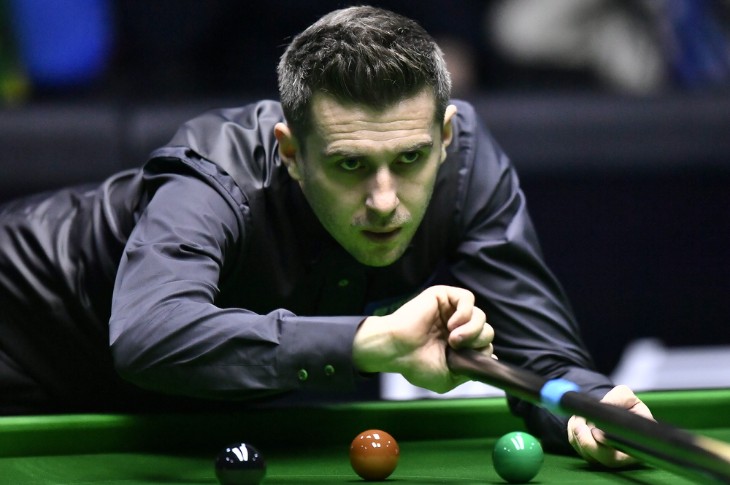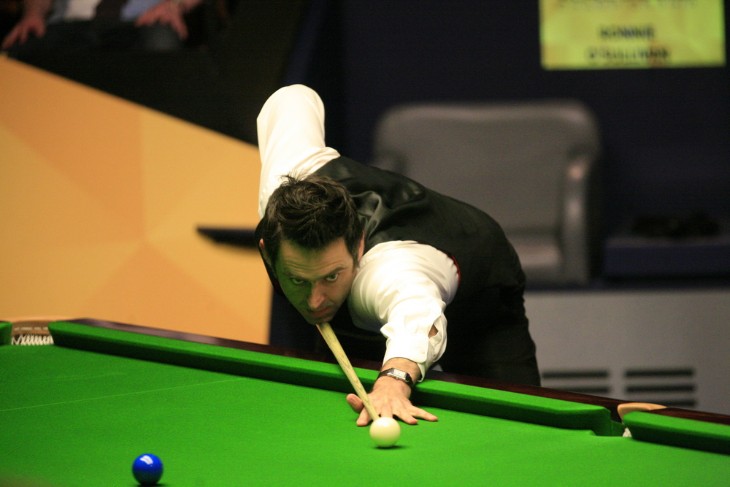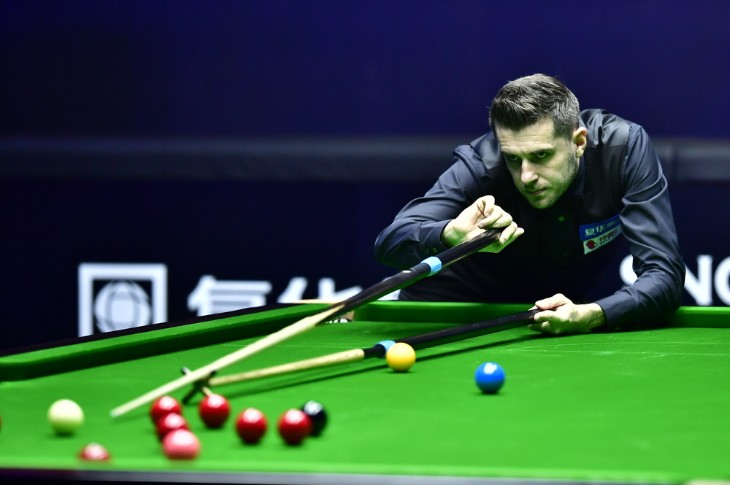Snooker, a game of precision, strategy, and skill, has captivated many across the globe. This fascinating sport, often seen as a blend of art and science, demands technical prowess and mental acumen. Understanding its nuances becomes crucial as you embark on the journey to refine your snooker skills.
Whether you're a beginner eager to learn the basics or an intermediate player looking to up your game, this guide is designed to help you navigate the path to improvement. The following sections will dive into essential techniques, strategic gameplay, and practical tips to enhance performance.
So, grab your cue and let's begin this exciting journey towards mastering the art of snooker.
Understanding the Basics of Snooker
Snooker, a game rich in history and skill, begins with a solid understanding of its fundamental principles. The game is played on a rectangular table covered with a green cloth, featuring six pockets, one at each corner and two in the middle of the longer sides. The standard snooker table measures 12 feet by 6 feet, a size that requires precise control and careful consideration of each shot.
Rules and Objectives: The primary goal in snooker is to score more points than your opponent by potting balls in a specific order. Points are earned by potting red balls, worth one point each, followed by a color ball, which varies in points from two to seven. After all the reds are potted, the colored balls must be potted in ascending order of their value.
Equipment: The cue, typically made of ash or maple, is a vital tool in snooker. Its weight, balance, and tip size can significantly influence a player's control over the cue ball. Snooker balls are slightly smaller than those in the pool, demanding greater precision.
Techniques: A good stance and smooth cue action are the foundation of a successful snooker player. As Steve Davis, six-time world champion, once said, "The key to success is a steady, focused stance and a smooth cueing action."
Break Shot: The game begins with a break shot. The effectiveness of a break can set the tone for the game, with a good break offering safety or scoring opportunities. Ronnie O'Sullivan, renowned for his rapid playing style, often employs an aggressive break strategy, showcasing the importance of this initial play.
Safety Play: Mastering the art of safety play is crucial. It's not always about potting balls but also about leaving the cue ball in a position that challenges your opponent. Stephen Hendry, a legend in the sport, was known for his tactical safety plays, often putting his opponents under challenging positions.
Technical Skills Improvement
Advancing your technical skills in snooker involves refining several key aspects of your play. This section focuses on developing your cueing techniques, understanding different shot types, and perfecting your stance and positioning.
Cueing Techniques
1. Grip and Delivery: The grip on your cue should be relaxed yet firm, allowing for fluid movement. A tense grip can lead to inaccurate shots. The delivery of the cue should be straight and smooth. Ronnie O'Sullivan, known for his fluid style, often emphasizes the importance of a relaxed grip for better control.
2. Cue Action: Practice a straight and consistent cue action. This involves a smooth backward and forward motion, ensuring the tip strikes the cue ball at the intended spot. A top player, Neil Robertson, often practices cue action drills to maintain his precision.
Shot Techniques
1. Potting: Focus on accuracy and angle judgment. Begin with simple straight pots and gradually move to more complex angles.
2. Spin and Positional Play: Learning to apply spin (topspin, backspin, and sidespin) is vital. It affects the cue ball's path after hitting the target ball, which is crucial for setting up subsequent shots. Mark Williams, known for his creative spin shots, uses spin to gain advantageous positions.
3. Safety Shots: These are defensive shots that make it difficult for your opponent to score. Practice hitting the cue ball to safe areas of the table, minimizing scoring opportunities for your opponent.
Positioning and Stance
1. Stance: A stable and comfortable stance is essential. Your feet should be shoulder-width apart, with your body aligned with the shot. Stephen Hendry often discussed the importance of a stable stance for consistent play.
2. Body Alignment: Your eyes, cue, and target line should form a straight line. Proper alignment ensures accuracy and consistency.
Practice Drills
1. Line-Up Drill: Place all red balls in a straight line down the table's center and practice potting them with the position for the next shot.
2. Target Practice: Set up specific target areas for the cue ball to land after potting a ball.
3. Cue Ball Control: Practice placing the cue ball on various parts of the table, improving your control over distance and spin.
Tips:
- Record your practice sessions to analyze and improve your technique.
- Regularly change your practice routines to cover all aspects of the game.
- Seek feedback from experienced players or coaches to identify and correct flaws in your technique.
By focusing on these technical aspects, you can significantly improve your game. As Ken Doherty, former world champion, advised, "Practice with a purpose. It's not about the hours you put in, but how you use them."
Strategic Gameplay
Mastering snooker isn't just about technical prowess; it's equally about understanding and implementing strategies that outsmart your opponent. This section delves into the strategic aspects of snooker, highlighting planning, execution, and cue ball control.

Importance of Strategy in Snooker
- Game Plan: A clear game plan based on your strengths and weaknesses is essential. Ray Reardon, a six-time world champion, often said, "A good snooker player plays the table, but a great one plays the opponent."
- Adaptability: Adapting your strategy based on the game's progress and your opponent's style is crucial.
Planning and Execution of Shots
- Shot Selection: Choose shots that score points and position the cue ball for subsequent shots. Judicious shot selection can build break opportunities or leave your opponent in difficult positions.
- Thinking Ahead: Always think a few shots ahead. Planning your route around the table is key. Ronnie O'Sullivan's rapid and high-scoring breaks often come from his exceptional ability to plan several shots.
Controlling the Cue Ball – Spin and Speed
- Spin Control: Utilizing different spins (topspin, backspin, sidespin) effectively can help control the cue ball's path after it strikes the target ball.
- Speed Control: The speed at which you hit the cue ball is crucial. It determines the angle and distance the ball travels. John Higgins excels at controlling the cue ball's speed, allowing him precise positioning for the next shot.
Safety Play and Psychological Warfare
- Effective Safety Play: A good safety shot can turn the game in your favor by limiting your opponent's options. Mark Selby, known for his tactical prowess, often uses safety play to dominate the game.
- Mind Games: Snooker is also a psychological battle. Playing shots that increase pressure on your opponent can lead to mistakes from their side.
Tips for Strategic Gameplay
- Watch professional matches to understand different strategies.
- Practice playing mock frames where you focus on strategic play rather than just potting balls.
- Learn to read the table and anticipate potential scenarios.
Remember, as Stephen Hendry, one of the game's legends, once said, "Snooker is chess with balls. It's about thinking several moves ahead."
Practice Routines and Drills
Developing and maintaining a structured practice routine is key to improving your snooker skills. This section outlines various drills and practice methods designed to enhance different aspects of your game.
Daily and Weekly Practice Routines
- Consistency: Aim for regular practice sessions, ideally daily. Short, focused practice can be more beneficial than infrequent, longer sessions.
- Balance: Divide your practice time between technical drills, strategic play, and match simulations. This ensures a well-rounded development.
Specific Drills for Improving Aim, Control, and Spin
- Aiming Drills: Use the 'ghost ball' method to improve your aiming. Visualize the point where the cue ball needs to strike the object ball for a successful pot.
- Positional Play Drills: Set up scenarios where you must position the cue ball in a specific area after potting. This improves your control over cue ball placement.
- Spin Drills: Practice applying different spins to the cue ball and observe its trajectory. This helps in understanding how spin affects ball movement.
Importance of Consistent Practice
- Skill Refinement: Regular practice helps refine your skills and correct any technical flaws.
- Confidence Building: The more you practice, the more confident you become in your shot selection and execution.
Practice Games
- Solo Practice Frames: Play frames against yourself, focusing on strategic play and cue ball control.
- Target Scoring: Set a target score for a practice frame and try to achieve it. This helps in pressure management.
Tips for Effective Practice
- Set Goals: Have clear, achievable goals for each practice session.
- Track Progress: Keep a log of your practice sessions and progress. This helps in identifying areas that need improvement.
- Feedback: If possible, get feedback from a coach or a more experienced player.
- Concentration: Practice maintaining focus and concentration during long practice sessions. This mimics match conditions.
- Visualization: Visualize successful shots and frames. This mental practice can be as effective as physical practice.
Snooker legend Joe Davis once said, "The more I practice, the luckier I get." Embrace this philosophy in your practice routines.
Mental and Physical Fitness
While often perceived as a predominantly skill-based sport, Snooker also requires a high degree of mental and physical fitness. This section explores how maintaining both can significantly impact your performance on the snooker table.

Role of Mental Focus and Concentration
- Mental Stamina: Long matches require sustained concentration. Developing mental stamina is crucial for staying focused throughout the game.
- Stress Management: Managing nerves and stress is vital, especially in competitive scenarios. Techniques such as deep breathing and mindfulness can help stay calm under pressure.
- Decision Making: A clear and focused mind aids in making better strategic decisions during play.
Physical Fitness Requirements
- Endurance: Although snooker is not physically demanding in the conventional sense, standing for long periods requires endurance. Regular cardiovascular exercises can help build this stamina.
- Stability and Control: Core strength is essential for maintaining stability and control during shots. Exercises focusing on the core and lower back can enhance your stance and cue control.
Tips for Maintaining Mental and Physical Health
- Incorporate a regular exercise regime that includes both cardio and strength training.
- A balanced diet aids in maintaining physical energy and mental clarity.
- Ensure you sleep enough, as fatigue can significantly affect concentration and performance.
The Psychological Aspects of the Game
- Confidence: Building confidence through successful practice and smaller competitive experiences can positively impact performance.
- Mental Rehearsal: Visualizing successful shots and game scenarios can prepare the mind for actual gameplay.
Learning from Professionals
Observing and learning from professional snooker players can provide invaluable insights into high-level strategies, techniques, and mental approaches to the game. This section discusses how engaging with professional snooker can enhance your skills and understanding of the sport.
Watching Professional Matches
- Technique Observation: Attention to the professionals' cueing techniques, shot selection, and safety plays. Noticing how players like Mark Selby or Judd Trump approach different scenarios can offer practical learning.
- Strategic Analysis: Analyze how professionals plan their frames, particularly in break-building and defensive plays. Understanding why a player chooses a particular shot can deepen your strategic thinking.
Importance of Coaching and Mentorship
- Personalized Feedback: A coach can provide tailored feedback on your technique and strategy, helping to identify and correct specific areas of weakness.
- Guidance and Support: Coaches can also offer moral and psychological support, which is crucial in a sport as mentally demanding as snooker.
Learning from Mistakes and Successes of Professional Players
- Case Studies: Analyzing famous frames, especially those involving big comebacks or crucial mistakes, can be highly educational. For instance, studying how Ronnie O’Sullivan constructed a winning break or how Steve Davis remained composed under pressure.
- Adapting Techniques: While developing your style is essential, incorporating elements from professional players can enhance your game. This could be a particular shot, a safety approach, or a mental strategy.
Tips for Learning from Professionals:
- Watch a variety of players to understand different styles and strategies.
- Try to replicate complex shots or strategies during your practice sessions.
- Keep an open mind and be willing to adapt your game based on new learnings.
In summary, engaging with professional snooker players can significantly accelerate your learning curve, whether through watching, reading, or direct coaching.
Bottom Line
In conclusion, excelling in snooker demands a blend of technical skills, strategic thinking, and continuous practice. Embracing lessons from professionals, coupled with maintaining physical and mental fitness, enhances your game.
Remember, improvement in snooker is a journey of persistence, learning, and passion, rewarding you with skill and enjoyment.
For more information:




.webp)


 (1).webp)




















